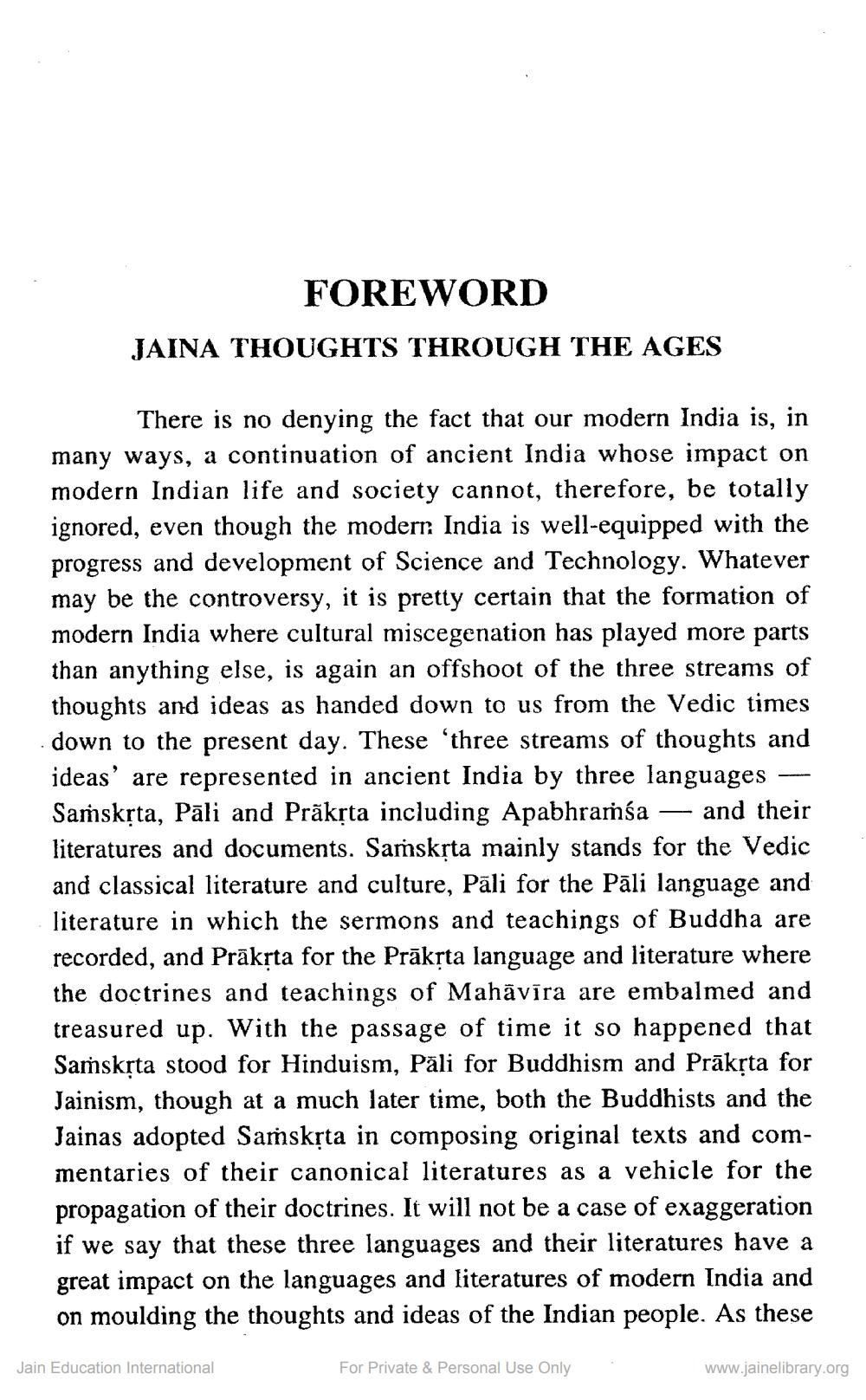________________
FOREWORD JAINA THOUGHTS THROUGH THE AGES
There is no denying the fact that our modern India is, in many ways, a continuation of ancient India whose impact on modern Indian life and society cannot, therefore, be totally ignored, even though the modern. India is well-equipped with the progress and development of Science and Technology. Whatever may be the controversy, it is pretty certain that the formation of modern India where cultural miscegenation has played more parts than anything else, is again an offshoot of the three streams of thoughts and ideas as handed down to us from the Vedic times down to the present day. These three streams of thoughts and ideas' are represented in ancient India by three languages — Samskrta, Pāli and Prāksta including Apabhraṁsa — and their literatures and documents. Samskrta mainly stands for the Vedic and classical literature and culture, Pāli for the Pāli language and literature in which the sermons and teachings of Buddha are recorded, and Prāksta for the Prāksta language and literature where the doctrines and teachings of Mahāvīra are embalmed and treasured up. With the passage of time it so happened that Saṁsksta stood for Hinduism, Pāli for Buddhism and Prāksta for Jainism, though at a much later time, both the Buddhists and the Jainas adopted Samskrta in composing original texts and commentaries of their canonical literatures as a vehicle for the propagation of their doctrines. It will not be a case of exaggeration if we say that these three languages and their literatures have a great impact on the languages and literatures of modern India and on moulding the thoughts and ideas of the Indian people. As these
Jain Education International
For Private & Personal Use Only
www.jainelibrary.org




